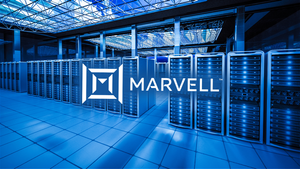
The year 2025 marks a pivotal moment in technological history, as Artificial Intelligence (AI) entrenches itself as the primary catalyst reshaping the global semiconductor industry. This "AI Supercycle" is driving an unprecedented demand for specialized chips, fundamentally influencing market valuations, and spurring intense innovation from design to manufacturing. Recent stock movements, particularly those of High-Bandwidth Memory (HBM) leader SK Hynix (KRX: 000660), vividly illustrate the profound economic shifts underway, signaling a transformative era that extends far beyond silicon.
AI's insatiable hunger for computational power is not merely a transient trend but a foundational shift, pushing the semiconductor sector towards unprecedented growth and resilience. As of October 2025, this synergistic relationship between AI and semiconductors is redefining technological capabilities, economic landscapes, and geopolitical strategies, making advanced silicon the indispensable backbone of the AI-driven global economy.
The Technical Revolution: AI at the Core of Chip Design and Manufacturing
The integration of AI into the semiconductor industry represents a paradigm shift, moving beyond traditional, labor-intensive approaches to embrace automation, precision, and intelligent optimization. AI is not only the consumer of advanced chips but also an indispensable tool in their creation.
At the heart of this transformation are AI-driven Electronic Design Automation (EDA) tools. These sophisticated systems, leveraging reinforcement learning and deep neural networks, are revolutionizing chip design by automating complex tasks like automated layout and floorplanning, logic optimization, and verification. What once took weeks of manual iteration can now be achieved in days, with AI algorithms exploring millions of design permutations to optimize for power, performance, and area (PPA). This drastically reduces design cycles, accelerates time-to-market, and allows engineers to focus on higher-level innovation. AI-driven verification tools, for instance, can rapidly detect potential errors and predict failure points before physical prototypes are made, minimizing costly iterations.
In manufacturing, AI is equally transformative. Yield optimization, a critical metric in semiconductor fabrication, is being dramatically improved by AI systems that analyze vast historical production data to identify patterns affecting yield rates. Through continuous learning, AI recommends real-time adjustments to parameters like temperature and chemical composition, reducing errors and waste. Predictive maintenance, powered by AI, monitors fab equipment with embedded sensors, anticipating failures and preventing unplanned downtime, thereby improving equipment reliability by 10-20%. Furthermore, AI-powered computer vision and deep learning algorithms are revolutionizing defect detection and quality control, identifying microscopic flaws (as small as 10-20 nm) with nanometer-level accuracy, a significant leap from traditional rule-based systems.
The demand for specialized AI chips has also spurred the development of advanced hardware architectures. Graphics Processing Units (GPUs), exemplified by NVIDIA's (NASDAQ: NVDA) A100/H100 and the new Blackwell architecture, are central due to their massive parallel processing capabilities, essential for deep learning training. Unlike general-purpose Central Processing Units (CPUs) that excel at sequential tasks, GPUs feature thousands of smaller, efficient cores designed for simultaneous computations. Neural Processing Units (NPUs), like Google's (NASDAQ: GOOGL) TPUs, are purpose-built AI accelerators optimized for deep learning inference, offering superior energy efficiency and on-device processing.
Crucially, High-Bandwidth Memory (HBM) has become a cornerstone of modern AI. HBM features a unique 3D-stacked architecture, vertically integrating multiple DRAM chips using Through-Silicon Vias (TSVs). This design provides substantially higher bandwidth (e.g., HBM3 up to 3 TB/s, HBM4 over 1 TB/s) and greater power efficiency compared to traditional planar DRAM. HBM's ability to overcome the "memory wall" bottleneck, which limits data transfer speeds, makes it indispensable for data-intensive AI and high-performance computing workloads. The full commercialization of HBM4 is expected in late 2025, further solidifying its critical role.
Corporate Chessboard: AI Reshaping Tech Giants and Startups
The AI Supercycle has ignited an intense competitive landscape, where established tech giants and innovative startups alike are vying for dominance, driven by the indispensable role of advanced semiconductors.
NVIDIA (NASDAQ: NVDA) remains the undisputed titan, with its market capitalization soaring past $4.5 trillion by October 2025. Its integrated hardware and software ecosystem, particularly the CUDA platform, provides a formidable competitive moat, making its GPUs the de facto standard for AI training. Taiwan Semiconductor Manufacturing Company (TSMC) (NYSE: TSM), as the world's largest contract chipmaker, is an indispensable partner, manufacturing cutting-edge chips for NVIDIA, Advanced Micro Devices (NASDAQ: AMD), Apple (NASDAQ: AAPL), and others. AI-related applications accounted for a staggering 60% of TSMC's Q2 2025 revenue, underscoring its pivotal role.
SK Hynix (KRX: 000660) has emerged as a dominant force in the High-Bandwidth Memory (HBM) market, securing a 70% global HBM market share in Q1 2025. The company is a key supplier of HBM3E chips to NVIDIA and is aggressively investing in next-gen HBM production, including HBM4. Its strategic supply contracts, notably with OpenAI for its ambitious "Stargate" project, which aims to build global-scale AI data centers, highlight Hynix's critical position. Samsung Electronics (KRX: 005930), while trailing in HBM market share due to HBM3E certification delays, is pivoting aggressively towards HBM4 and pursuing a vertical integration strategy, leveraging its foundry capabilities and even designing floating data centers.
Advanced Micro Devices (NASDAQ: AMD) is rapidly challenging NVIDIA's dominance in AI GPUs. A monumental strategic partnership with OpenAI, announced in October 2025, involves deploying up to 6 gigawatts of AMD Instinct GPUs for next-generation AI infrastructure. This deal is expected to generate "tens of billions of dollars in AI revenue annually" for AMD, underscoring its growing prowess and the industry's desire to diversify hardware adoption. Intel Corporation (NASDAQ: INTC) is strategically pivoting towards edge AI, agentic AI, and AI-enabled consumer devices, with its Gaudi 3 AI accelerators and AI PCs. Its IDM 2.0 strategy aims to regain manufacturing leadership through Intel Foundry Services (IFS), bolstered by a $5 billion investment from NVIDIA to co-develop AI infrastructure.
Beyond the giants, semiconductor startups are attracting billions in funding for specialized AI chips, optical interconnects, and open-source architectures like RISC-V. However, the astronomical cost of developing and manufacturing advanced AI chips creates a massive barrier for many, potentially centralizing AI power among a few behemoths. Hyperscalers like Google (NASDAQ: GOOGL), Amazon (NASDAQ: AMZN), and Microsoft (NASDAQ: MSFT) are increasingly designing their own custom AI chips (e.g., TPUs, Trainium2, Azure Maia 100) to optimize performance and reduce reliance on external suppliers, further intensifying competition.
Wider Significance: A New Industrial Revolution
The profound impact of AI on the semiconductor industry as of October 2025 transcends technological advancements, ushering in a new era with significant economic, societal, and environmental implications. This "AI Supercycle" is not merely a fleeting trend but a fundamental reordering of the global technological landscape.
Economically, the semiconductor market is experiencing unprecedented growth, projected to reach approximately $700 billion in 2025 and on track to become a $1 trillion industry by 2030. AI technologies alone are expected to account for over $150 billion in sales within this market. This boom is driving massive investments in R&D and manufacturing facilities globally, with initiatives like the U.S. CHIPS and Science Act spurring hundreds of billions in private sector commitments. However, this growth is not evenly distributed, with the top 5% of companies capturing the vast majority of economic profit. Geopolitical tensions, particularly the "AI Cold War" between the United States and China, are fragmenting global supply chains, increasing production costs, and driving a shift towards regional self-sufficiency, prioritizing resilience over economic efficiency.
Societally, AI's reliance on advanced semiconductors is enabling a new generation of transformative applications, from autonomous vehicles and sophisticated healthcare AI to personalized AI assistants and immersive AR/VR experiences. AI-powered PCs are expected to make up 43% of all shipments by the end of 2025, becoming the default choice for businesses. However, concerns exist regarding potential supply chain disruptions leading to increased costs for AI services, social pushback against new data center construction due to grid stability and water availability concerns, and the broader impact of AI on critical thinking and job markets.
Environmentally, the immense power demands of AI systems, particularly during training and continuous operation in data centers, are a growing concern. Global AI energy demand is projected to increase tenfold, potentially exceeding Belgium's annual electricity consumption by 2026. Semiconductor manufacturing is also water-intensive, and the rapid development and short lifecycle of AI hardware contribute to increased electronic waste and the environmental costs of rare earth mineral mining. Conversely, AI also offers solutions for climate modeling, optimizing energy grids, and streamlining supply chains to reduce waste.
Compared to previous AI milestones, the current era is unique because AI itself is the primary, "insatiable" demand driver for specialized, high-performance, and energy-efficient semiconductor hardware. Unlike past advancements that were often enabled by general-purpose computing, today's AI is fundamentally reshaping chip architecture, design, and manufacturing processes specifically for AI workloads. This signifies a deeper, more direct, and more integrated relationship between AI and semiconductor innovation than ever before, marking a "once-in-a-generation reset."
Future Horizons: The Road Ahead for AI and Semiconductors
The symbiotic evolution of AI and the semiconductor industry promises a future of sustained growth and continuous innovation, with both near-term and long-term developments poised to reshape technology.
In the near term (2025-2027), we anticipate the mass production of 2nm chips beginning in late 2025, followed by A16 (1.6nm) for data center AI and High-Performance Computing (HPC) by late 2026, enabling even more powerful and energy-efficient chips. AI-powered EDA tools will become even more pervasive, automating design tasks and accelerating development cycles significantly. Enhanced manufacturing efficiency will be driven by advanced predictive maintenance systems and AI-driven process optimization, reducing yield loss and increasing tool availability. The full commercialization of HBM4 memory is expected in late 2025, further boosting AI accelerator performance, alongside the widespread adoption of 2.5D and 3D hybrid bonding and the maturation of the chiplet ecosystem. The increasing deployment of Edge AI will also drive innovation in low-power, high-performance chips for applications in automotive, healthcare, and industrial automation.
Looking further ahead (2028-2035 and beyond), the global semiconductor market is projected to reach $1 trillion by 2030, with the AI chip market potentially exceeding $400 billion. The roadmap includes further miniaturization with A14 (1.4nm) for mass production in 2028. Beyond traditional silicon, emerging architectures like neuromorphic computing, photonic computing (expected commercial viability by 2028), and quantum computing are poised to offer exponential leaps in efficiency and speed, with neuromorphic chips potentially delivering up to 1000x improvements in energy efficiency for specific AI inference tasks. TSMC (NYSE: TSM) forecasts a proliferation of "physical AI," with 1.3 billion AI robots globally by 2035, necessitating pushing AI capabilities to every edge device. Experts predict a shift towards total automation of semiconductor design and a predominant focus on inference-specific hardware as generative AI adoption increases.
Key challenges that must be addressed include the technical complexity of shrinking transistors, the high costs of innovation, data scarcity and security concerns, and the critical global talent shortage in both AI and semiconductor fields. Geopolitical volatility and the immense energy consumption of AI-driven data centers and manufacturing also remain significant hurdles. Experts widely agree that AI is not just a passing trend but a transformative force, signaling a "new S-curve" for the semiconductor industry, where AI acts as an indispensable ally in developing cutting-edge technologies.
Comprehensive Wrap-up: The Dawn of an AI-Driven Silicon Age
As of October 2025, the AI Supercycle has cemented AI's role as the single most important growth driver for the semiconductor industry. This symbiotic relationship, where AI fuels demand for advanced chips and simultaneously assists in their design and manufacturing, marks a pivotal moment in AI history, accelerating innovation and solidifying the semiconductor industry's position at the core of the digital economy's evolution.
The key takeaways are clear: unprecedented growth driven by AI, surging demand for specialized chips like GPUs, NPUs, and HBM, and AI's indispensable role in revolutionizing semiconductor design and manufacturing processes. While the industry grapples with supply chain pressures, geopolitical fragmentation, and a critical talent shortage, it is also witnessing massive investments and continuous innovation in chip architectures and advanced packaging.
The long-term impact will be characterized by sustained growth, a pervasive integration of AI into every facet of technology, and an ongoing evolution towards more specialized, energy-efficient, and miniaturized chips. This is not merely an incremental change but a fundamental reordering, leading to a more fragmented but strategically resilient global supply chain.
In the coming weeks and months, critical developments to watch include the mass production rollouts of 2nm chips and further details on 1.6nm (A16) advancements. The competitive landscape for HBM (e.g., SK Hynix (KRX: 000660), Samsung Electronics (KRX: 005930)) will be crucial, as will the increasing trend of hyperscalers developing custom AI chips, which could shift market dynamics. Geopolitical shifts, particularly regarding export controls and US-China tensions, will continue to profoundly impact supply chain stability. Finally, closely monitor the quarterly earnings reports from leading chipmakers like NVIDIA (NASDAQ: NVDA), Advanced Micro Devices (NASDAQ: AMD), Intel Corporation (NASDAQ: INTC), TSMC (NYSE: TSM), and Samsung Electronics (KRX: 005930) for real-time insights into AI's continued market performance and emerging opportunities or challenges.
This content is intended for informational purposes only and represents analysis of current AI developments.
TokenRing AI delivers enterprise-grade solutions for multi-agent AI workflow orchestration, AI-powered development tools, and seamless remote collaboration platforms.
For more information, visit https://www.tokenring.ai/.





